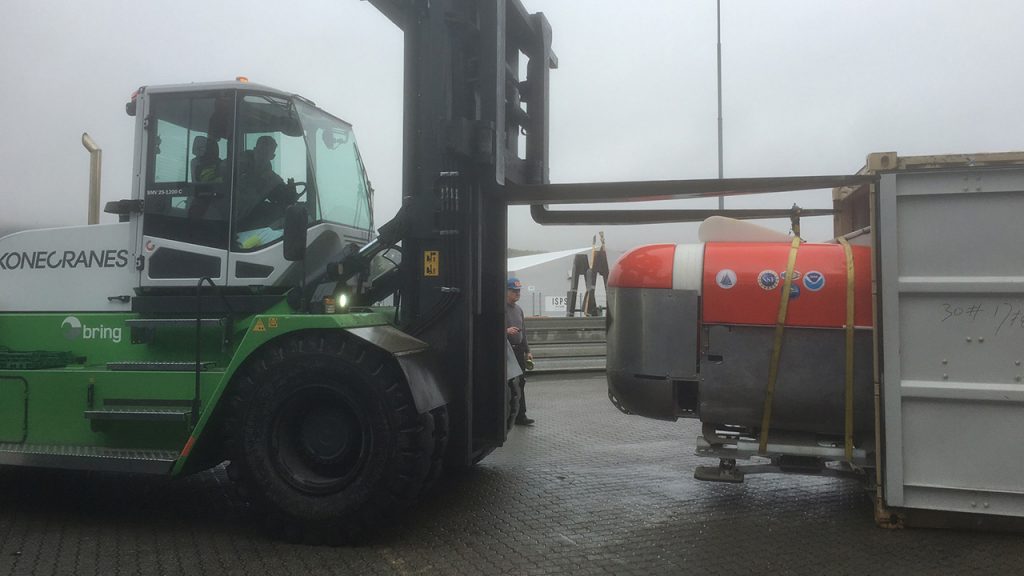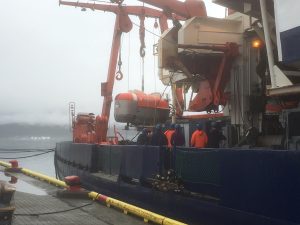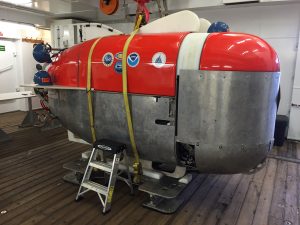
Unpacking NUI (photo by Chris German, Woods Hole Oceanographic Institution)
As with all research expeditions, some of the trickiest moments come while getting all the equipment you need for weeks away offshore to be delivered to the ship and installed in time for sailing. You can’t really run to the store mid-cruise if you forget something.
This is particularly the case when heading into such a remote setting as we are, and the chances for things to go awry only increase when working with a ship of one nationality (in this case, Germany) and staging the expedition out of a different country (Norway). And when you are bringing a prototype robotic underwater vehicle to sea, the complexity gets that much greater.

NUI transferring to the Polarstern (photo by Chris German, Woods Hole Oceanographic Institution)
This is the second time in two years that our Chief Scientist, Prof. Antje Boetius, has invited us out to sea on the FS Polarstern and we are sailing from the same port as last time (Tromso, Norway), so we knew much of what to expect and planned accordingly. First, there are no easy routes to Tromso from the U.S., so we flew in early and made sure that everybody from our team (from points as far east as Cape Cod, as far west as Pasadena, with Baltimore, MD, and Bethlehem, PA, in between) arrived in port with all our baggage more than two days ahead of departure. That meant setting off on Labor Day in the U.S., which, on Cape Cod, coincided with the end-of-summer traffic and, this time, with tropical storm Hermine.
Fortunately, the storm stayed south and our flights out of Boston were unaffected. The rest of the journey was similarly uneventful and we were all in Tromso early on Wednesday, ready to begin loading gear and setting up our labs on the ship.

NUI safe on board. (photo by Kevin Hand, JPL)
Our first priority was to unload the NUI vehicle from its shipping container and transfer it onto the ship safely. After that come the dozens and dozens of boxes of instruments, cables, computers, and tool-kits that the engineers need to make everything work (and they assure me they need everything). Although we will have many days ahead during our transit north through the ocean and then the ice to get ourselves organized before we reach our first dive site, there is nothing like knowing that you didn’t forget anything critical before you leave home. So we have been very grateful that the captain and crew here on the FS Polarstern have been so accommodating and welcomed us onboard the ship early as part of a small advance party these past two days while the rest of the science team only arrived tonight.
We already have the core vehicle assembled and we have tested out the vent-fluid samplers that we hope to use to sample hydrothermal vents within the next few weeks so everything that HAD to be done in port is now done.
Tonight we sail to the fuel terminal to fill the ship for our expedition and as soon as the luggage belonging to the 25 scientists who just flew in has arrived tomorrow morning (Did I mention that the rest of the science team arrived, but their luggage did not?) we’ll be headed out to sea.

